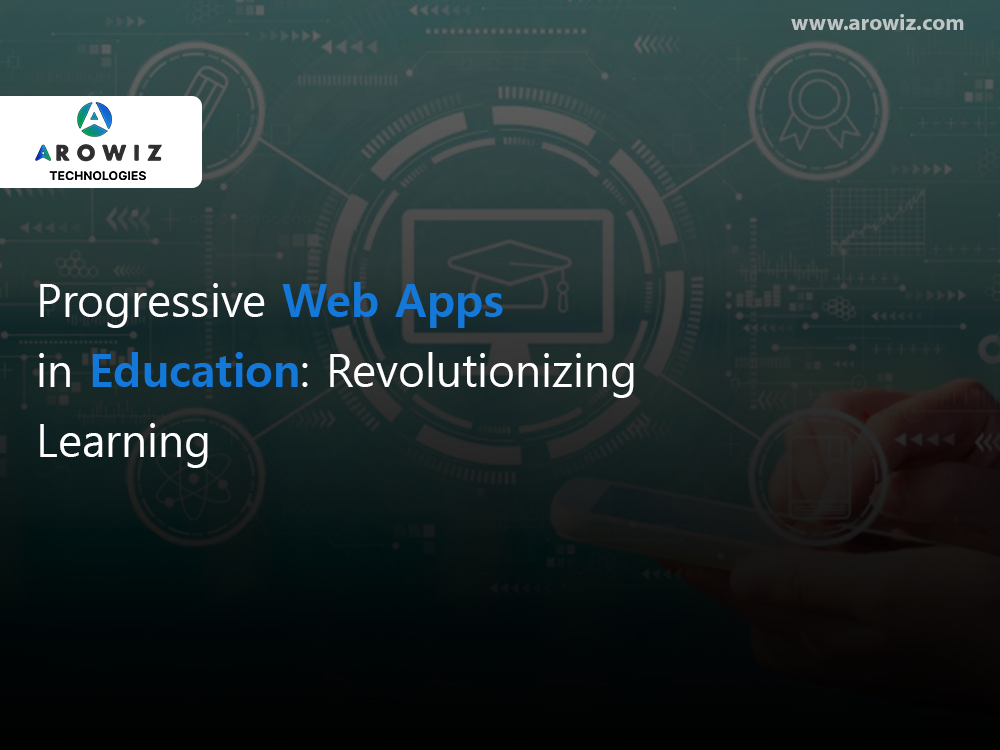Progressive Web Apps (PWAs) are not just changing the way we browse the web; they’re also revolutionizing the education landscape….
Progressive Web Apps in Education: Revolutionizing Learning
admin
- October 14, 2023
2 min read

Progressive Web Apps (PWAs) are not just changing the way we browse the web; they’re also revolutionizing the education landscape. In this blog, we explore the significant impact PWAs are having on education, from improved accessibility to enhanced engagement and personalized learning experiences.
How PWAs break down device barriers
Cross-Platform Compatibility:
PWAs are designed to work seamlessly on different operating systems, including iOS, Android, Windows, and macOS. This cross-platform compatibility ensures that students can access educational content regardless of their device preference.
Responsive Design:
PWAs employ responsive web design principles, adapting the user interface and content layout to fit the screen size and orientation of the device. This responsive design ensures that PWAs look and function well on smartphones, tablets, laptops, and desktop computers.
Offline Functionality:
PWAs use service workers to cache content and enable offline access. This means that students can continue learning even when they are in areas with limited or no internet connectivity, effectively breaking the barrier of network dependency.
App-Like Experience:
PWAs offer an app-like experience with features like home screen installation and push notifications. Students can add the PWA to their device’s home screen for quick access, just like native apps, creating a seamless transition between web and app environments.
Engaging Interactive Content
Rich Media Integration:
PWAs support videos, animations, and interactive simulations for engaging visual content.
Interactive Quizzes:
Educators can embed quizzes with instant feedback to promote active learning.
Gamification:
PWAs enable gamified elements like badges and leaderboards for enhanced engagement.
Real-Time Collaboration:
Students can collaborate in real time through chat and collaborative tools.
Personalization:
PWAs use data to offer personalized learning experiences, adapting content to individual needs.
Cost-Efficient Solutions
No Printing or Distribution Costs:
PWAs eliminate the need for printed textbooks, workbooks, and other physical materials, reducing printing and distribution expenses.
Instant Updates and Revisions:
Content can be updated in real time, eliminating the costs of reprinting and redistributing updated materials.
Accessibility Across Devices:
PWAs work on existing devices, reducing the need for expensive hardware or proprietary software.
Lower Maintenance Costs:
Maintenance of digital content is generally more cost-effective than managing physical materials over time.
Global Accessibility:
PWAs can reach a global audience without the need for shipping or localized printing, making education more accessible worldwide.
Conclusion
Progressive Web Apps have the potential to revolutionize education by making learning more accessible, engaging, and tailored to individual needs. As they continue to evolve, PWAs are set to play a pivotal role in shaping the future of education worldwide.
Tags
Our New Letter
Get productivity tips delivered straight to your inbox
Ready for more?

Arowiz Technologies is a Central India-based customer Centric software development & Expert IT Staff Augmentation company ...
FOR JOBS
hr@arowiz.comFOR SALES
sales@arowiz.comMARKETING / BLOGS
info@arowiz.comGET CONNECTED
Top Industry
About Us
Top Services
Hire Expert Developers
- AI / ML Developers
- Blockchain Developers
- DevOps Developers
- Web3 / Gaming Developers
- Full Stack Developers
- AR / VR – Meta Developers
- Python Developers
- Solidity Developers
- Node.js Developers
- ReatJs Developers
- Next.Js Developers
- Flutter Developers
- React Native Developers
- Golang Developers
- Mobile App Developers







